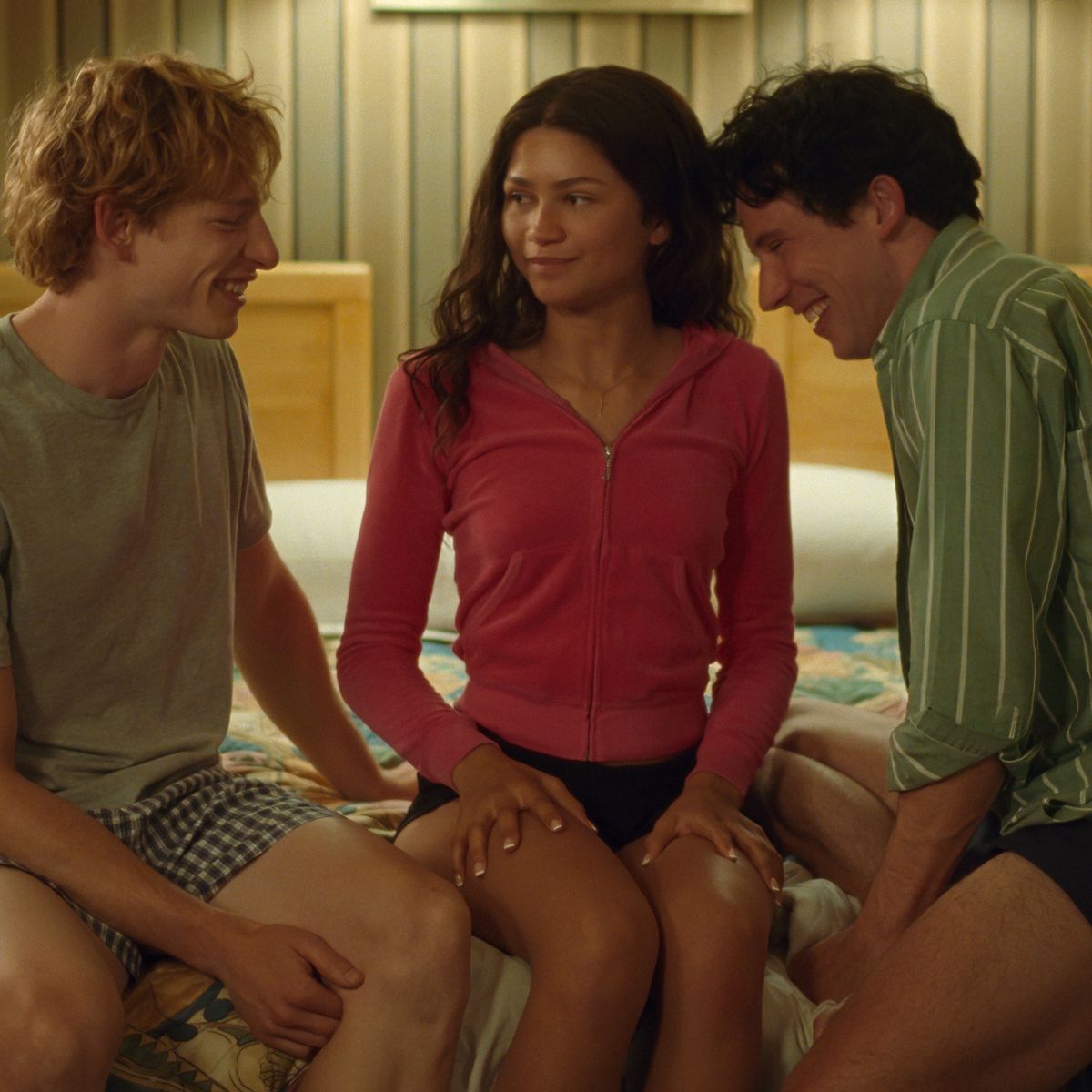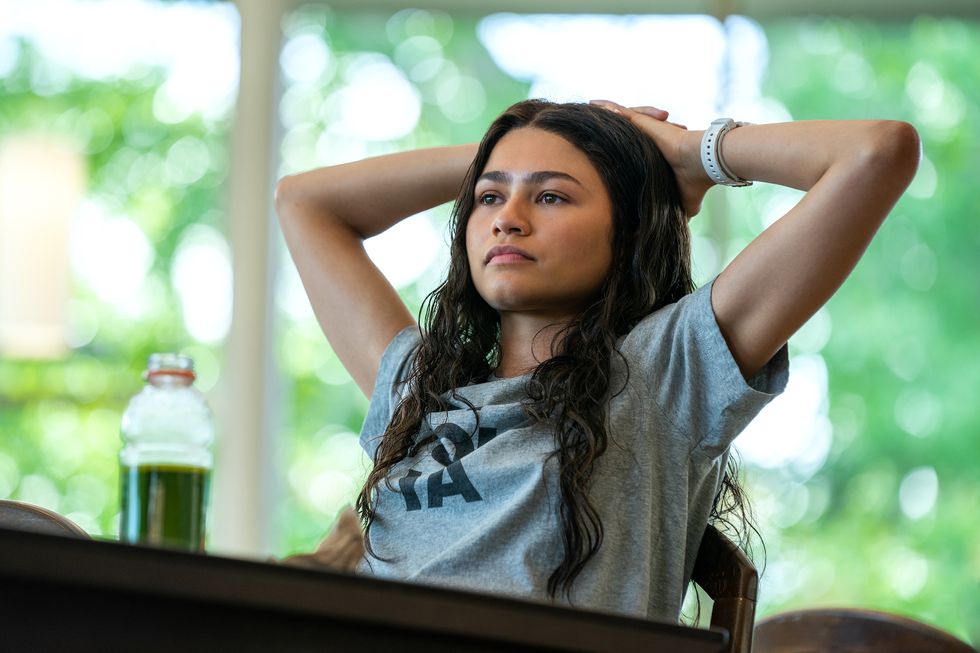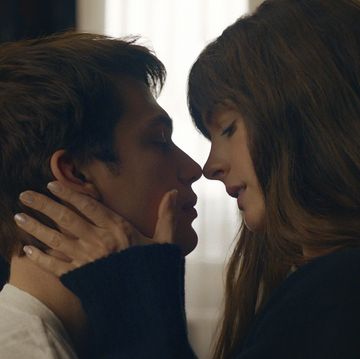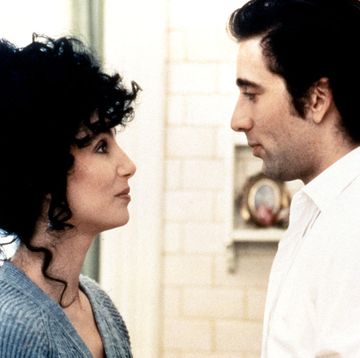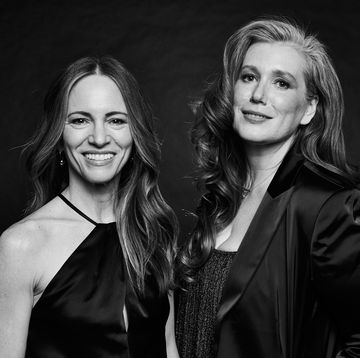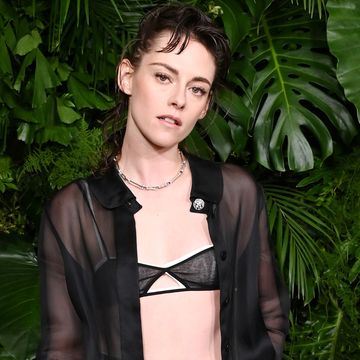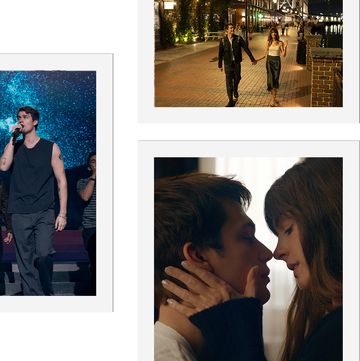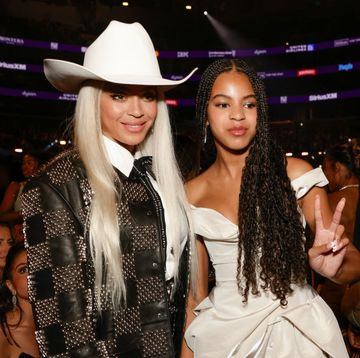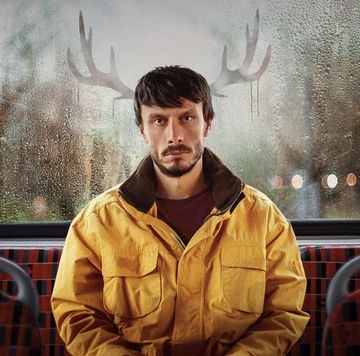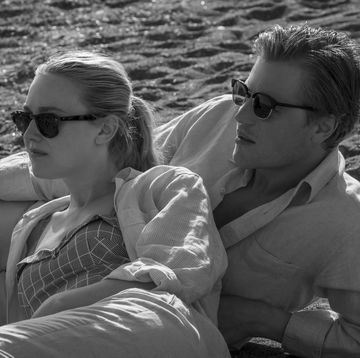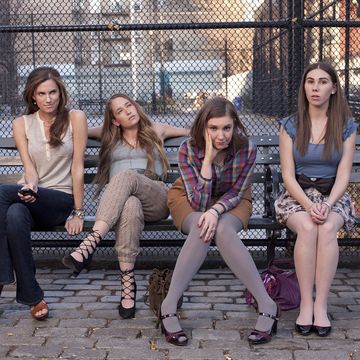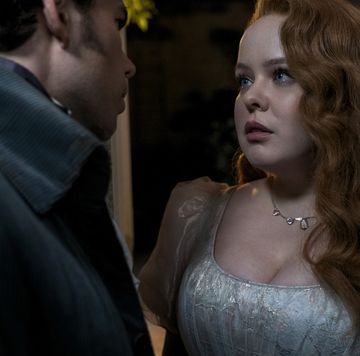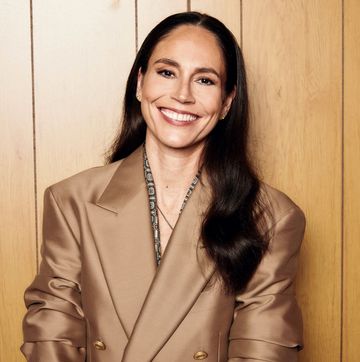It is the hottest scene of the hottest film of the year. Near the start of Challengers, teenage tennis sensation Tashi Duncan (Zendaya) finds herself in the dingy hotel room shared by two of her male contemporaries: Patrick Zweig (Josh O’Connor) and Art Donaldson (Mike Faist). The hormone-fueled besties have just followed Tashi around a party, where they ogled at her in her intensely 2010-coded royal-blue dress. Now, they’re all drinking beer from cans on the hotel room floor. Both boys eventually ask for Tashi’s number. In response, she engineers an awkward and arousing three-way kiss, before abruptly getting up to go. “I’m not a home-wrecker,” she tells them, and then says she will give her number to the winner of Art and Patrick’s match the next day. Suddenly, it’s game on.
In Challengers, tennis is a metaphor for the most basic human urge: desire. (At one point, I found myself feeling jealous of a racket Zendaya smashed to smithereens, or the ball being pummeled back and forth between Art and Patrick.) As directed by Luca Guadagnino, it’s a hot, sweaty spectacle—one that confirms the Sexy Tennis Movie as a definitive canon. Tennis and sex make the perfect match—the very act of flirting can feel like a metaphorical game of tennis. Plus, it’s a sport in which women have achieved greater parity with men, and what’s hotter than equality? Sexy Tennis Movies like Challengers might seem silly, but they’re really about power dynamics in relationships, human fallibilities, and ambition.
Whether it’s a movie about tennis or civil war, it’s my strong belief that any film is improved with the presence of Kirsten Dunst. Wimbledon, the 2004 film starring Dunst opposite Paul Bettany, is no exception. Wimbledon is the foundational tennis rom-com. Confident American pro Lizzie Bradbury meets bumbling English player Peter Colt during his final appearance at the sport’s greatest tournament. Lizzie lights a fire in Peter and, somewhere in between all the sex they’re having, the aging pro finds it in himself to beat the odds.
If Wimbledon is like a warm hug, then Woody Allen’s Match Point is … less so. In the 2005 film, retired tennis pro Chris (Jonathan Rhys Meyers) strikes up a friendship with one of his wealthy students, Tom. Chris embarks on a steamy affair with Tom’s beautiful fianceé, Nola (Scarlett Johansson), before things quickly get dark. (There is a gun hidden in a tennis bag.)
And if Wimbledon is a serve, then Challengers is an ace. The films might not be playing in the same league, but they share a central metaphor: Tennis is the prism through which we learn how the characters feel about each other and themselves. Sitting on the beach, a sirenlike Tashi tells an arrogant Patrick that he “doesn’t know” what tennis really is, before concluding: “It’s a relationship.” In the film, his and Art’s playing styles represent two conflicting factions of Tashi’s innermost desires. Bad boy Patrick plays “show tennis,” with flashy shots designed to make the crowd whoop. On the other side of the net, Art plays “percentage tennis”—a safer game, less exciting to watch, but more consistent. (Who among us hasn’t been torn between two men like this?)
Challengers is also a stunning visual spectacle. (Bone structure! Balls! Bodies! Backhands! It’s truly got it all.) Tennis has always had its own distinct aesthetic, from the rackets to the court and tennis skirts. Many real-life tennis legends, like Serena Williams and Roger Federer, have branched out into fashion design, underlining it as one of the more fashion-forward sports. Challengers marks the first film costuming credit for Jonathan Anderson, creative director at Loewe and founder of luxury fashion brand JW Anderson. The girls (and the gays) owe him big-time for masterminding Zendaya’s courtside looks, in which she’s impossibly chic in shades and Chanel flats, without a hair of her perfectly blow-dried bob out of place.
Speaking of which, Challengers feels remarkably queer for a film about a heterosexual love triangle. Perhaps this is the touch of director Guadagnino—who brought Timothée Chalamet eating that peach to our screens in 2017 gay romance Call Me by Your Name. The main three characters of the new film are partially naked for a lot of it, whether it’s Art and Patrick in a steamy sauna, or Tashi strutting around fancy hotel rooms rubbing lotion onto her body. The relationship between Patrick and Art feels familial, adversarial, and also homoerotic at points. (There is a particular scene involving churro sticks that I’m still thinking about.) Guadagnino leaves the specifics of their history together (and their true feelings about each other) open to interpretation.
Then there is Zendaya, whose portrayal of an alpha-female tennis girlboss seems destined to spark a million lesbian awakenings. Honestly? As a gay man, she briefly had me reconsidering my sexuality, too. (We say we want “gay representation,” but what we really mean is more films starring Dom Top Zendaya.) The first time Patrick meets Tashi, he turns to Art and whispers: “I’d let her fuck me with the racket.” This could be read as him objectifying her—and he is. But he is also drawn to her power, precisely because it’s an inversion of the standard heterosexual relationship dynamic.
Challengers almost feels like a queer movie about straight people. This might be a nod to the fact that, in the real world, some of its sport’s biggest stars are queer. In my experience, many LGBTQ+ people love tennis; and growing up, I was drawn to the sport at least in part because it’s more inclusive than most team sports. (And because female players in particular, like Serena and Venus Williams, embody a survivor spirit that unites most gay icons.)
The story of one of tennis’s greatest queer champions is told in 2017’s Battle of the Sexes. The film, starring Emma Stone and Steve Carell, is based on the true story of the 1973 tennis match between Billie Jean King and Bobby Riggs. King had become one of the most prominent feminist figures in the United States, after founding the Women’s Tennis Association and campaigning for equal prize money for women. Riggs—a retired player and self-styled chauvinist pig—challenged her to the match to prove that men were inherently better tennis players than women. At a moment of major cultural change, the stakes couldn’t have been higher.
As the film depicts it, in the run-up to the match, King discovers she is attracted to women. While married to her husband, she embarks on an affair with hairstylist Marilyn. The movie has a wider social message, but it also reverberates with sexual tension. “I’ve never seen anything like it,” Marilyn says, the first time she sees King play. “It must be intoxicating being inside your skin.” Again, tennis is framed as a relationship. “You’re just a phase,” King’s husband, Larry, tells Marilyn, warning her off his wife. “Tennis is her true love—and if you get between her and the game, you’re gone.”
In the Sexy Tennis Movie canon, female leads are not presented as subordinate. In the final scene of Wimbledon, we’re told that Lizzie goes on to win both the U.S. Open and Wimbledon twice. In the movie and the real Battle of the Sexes match, King defeated Riggs in a symbolic victory for women everywhere, and has spent the rest of her life campaigning for gender equality and social justice. These hard-won rights transcend tennis, and sport itself. But I think equality is actually at the heart of why tennis films are often so wrought with sexual tension. An evenly matched game is always much more thrilling to watch, or play—and if tennis really is “a relationship,” the same rule applies.
In its final moments, Challengers lures its spectators into thinking Patrick and Art are the focus. (My fantasies were fulfilled when we, the audience, literally became the ball being smacked between the two of them.) But whoever wins their on-court showdown starts to feel less important compared with Tashi rediscovering her fire—and her roar. Beyond the serving and the sex, Challengers is really a story about being brave enough to fight for what—or who—you really want. What could be hotter than that?
Louis Staples is a freelance culture writer and critic based in London, UK. He writes “Cultural Staples” — a fortnightly culture essay at Bazaar.com. His work is featured in The Cut, The Guardian, Vogue, Rolling Stone, and Variety.
